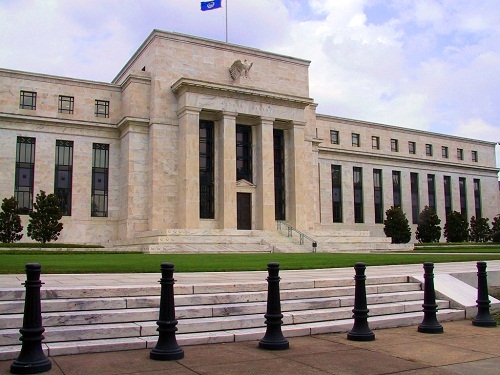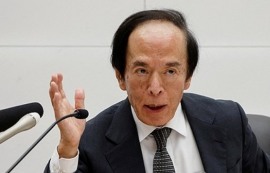"경기침체 불가피한 것 아니다" 바이든 발언에 동조
 이미지 확대보기
이미지 확대보기미국의 중앙은행인 연방준비제도(Fed·연준)의 제롬 파월 의장은 한국 시간 24일 하워 금융서비스위원회에 출석 발언을 이어갔다. 이중 가장 주목되는 대목은 경기침체(recession)가 불가피한 것은 아니라는 조 바이든 대통령의 말에 동의하느냐는 질문에 "경기침체가 불가피하다고 생각하지 않는다"고 답한 부문이다. 파월 의장은 전날 상원 은행위원회에 출석해 "경기침체 가능성이 존재하며 연착륙은 매우 도전적인 일"이라고 말했다. 하룻만에 경기침체와 연착륙에 관한 말을 뒤짚은 것으로 뉴욕증시에서는 해석하고 있다.
파월 의장은 인플레이션 대응 의지 수준을 묻는 말에는 "무조건적(unconditional)"이라고 밝히면서 인플레이션에 대한 총력 대응 방침을 재차 확인했다. "인플레이션을 2%로 복귀시켜 물가를 안정시키지 않으면 경제성장의 혜택이 골고루 돌아가는 완전 고용(maximum employment)이 유지되는 기간을 지속시킬 수 없다"고 밝혔다. 파월 의장은 이어 "향후 수개월간 인플레이션이 지속적으로 하향돼 2% 수준으로 복귀하는 강력한 증거를 찾을 것"이라면서 "우리는 현재 진행되고 있는 금리 인상은 적절하다고 보는데 변화의 속도는 새 증거와 경제 전망에 달려 있다"고 밝혔다.
파월 의장은 또 인플레이션을 억제하면서 고용시장을 좋게 유지할 수 있느냐는 질문에는 "금리 조정은 여러 채널을 통해 경제 전반에 걸쳐 영향을 미친다"면서 "현재 기록적으로 낮은 수준인 실업률이 높아질 리스크는 있다"고 말했다. 그는 또 연준이 여전히 경제 연착륙 방안을 갖고 있느냐는 질문에는 "우크라이나 전쟁에 따른 유가와 음식 가격, 공급망 문제로 점점 더 도전적(challenging)으로 돼 가고 있다"고 답했다. 경제 성장과 관련해서는 "올 전반기는 좀 이례적(anomalous)이었는데 후반기에 성장은 상당히(fairly) 강할 것으로 본다"고 말했다.
파월 의장은 미 상원 은행위원회에 출석, 경기침체와 관련해 "그것은 확실히 가능성"이라며 "우리는 경기침체를 일으키려고 하지 않으며 경기침체를 일으킬 필요가 있다고 생각하지도 않지만, 그것이 핵심이라고 생각한다"고 말했다. 그는 "경기침체 가능성이 존재하며 연착륙은 매우 도전적인 일"이라며 "또 다른 위험은 가격 탄력성을 회복하지 못해 높은 물가 상승이 경제 전반에 퍼지는 것이다. 우리는 물가상승률을 2%대로 돌려놔야 한다"고 단언했다. 그는 특히 "최근 몇 개월간 전 세계에서 벌어진 일들이 우리가 원하는 바를 성취하는 것을 한층 어렵게 만들고 있다"며 "우리는 한 번도 그것이 쉽게 이뤄질 것이라고 말한 적이 없다"고도 했다.
그동안 바이든 대통령을 비롯한 내각은 그간 경기침체가 불가피한 것은 아니라는 관점을 피력해 왔다. 바이든 대통령은 지난 16일 AP통신과 인터뷰에서 "경기침체가 불가피한 일은 아니다"라며 "우리는 세계 어느 나라보다도 인플레이션을 극복할 강력한 위치에 있다"고 말했다. 재닛 옐런 재무장관 역시 "경제가 안정적 성장기로 이행하며 둔화할 것으로 전망한다"며 "경기 침체가 불가피한 것은 아니다"라고 말했다.
제롬 파월 의회청문회 발언론
Chair Powell submitted identical remarks to the Committee on Financial Services, U.S. House of Representatives, on June 23, 2022.
I will begin with one overarching message. At the Fed, we understand the hardship high inflation is causing. We are strongly committed to bringing inflation back down, and we are moving expeditiously to do so. We have both the tools we need and the resolve it will take to restore price stability on behalf of American families and businesses. It is essential that we bring inflation down if we are to have a sustained period of strong labor market conditions that benefit all.
I will review the current economic situation before turning to monetary policy.
Current Economic Situation and Outlook
Inflation remains well above our longer-run goal of 2 percent. Over the 12 months ending in April, total PCE (personal consumption expenditures) prices rose 6.3 percent; excluding the volatile food and energy categories, core PCE prices rose 4.9 percent. The available data for May suggest the core measure likely held at that pace or eased slightly last month. Aggregate demand is strong, supply constraints have been larger and longer lasting than anticipated, and price pressures have spread to a broad range of goods and services. The surge in prices of crude oil and other commodities that resulted from Russia's invasion of Ukraine is boosting prices for gasoline and fuel and is creating additional upward pressure on inflation. And COVID-19-related lockdowns in China are likely to exacerbate ongoing supply chain disruptions. Over the past year, inflation also increased rapidly in many foreign economies, as discussed in a box in the June Monetary Policy Report.
Overall economic activity edged down in the first quarter, as unusually sharp swings in inventories and net exports more than offset continued strong underlying demand. Recent indicators suggest that real gross domestic product growth has picked up this quarter, with consumption spending remaining strong. In contrast, growth in business fixed investment appears to be slowing, and activity in the housing sector looks to be softening, in part reflecting higher mortgage rates. The tightening in financial conditions that we have seen in recent months should continue to temper growth and help bring demand into better balance with supply.
The labor market has remained extremely tight, with the unemployment rate near a 50‑year low, job vacancies at historical highs, and wage growth elevated. Over the past three months, employment rose by an average of 408,000 jobs per month, down from the average pace seen earlier in the year but still robust. Improvements in labor market conditions have been widespread, including for workers at the lower end of the wage distribution as well as for African Americans and Hispanics. A box in the June Monetary Policy Report discusses developments in employment and earnings across all major demographic groups. Labor demand is very strong, while labor supply remains subdued, with the labor force participation rate little changed since January.
Monetary Policy
The Fed's monetary policy actions are guided by our mandate to promote maximum employment and stable prices for the American people. My colleagues and I are acutely aware that high inflation imposes significant hardship, especially on those least able to meet the higher costs of essentials like food, housing, and transportation. We are highly attentive to the risks high inflation poses to both sides of our mandate, and we are strongly committed to returning inflation to our 2 percent objective.
Against the backdrop of the rapidly evolving economic environment, our policy has been adapting, and it will continue to do so. With inflation well above our longer-run goal of 2 percent and an extremely tight labor market, we raised the target range for the federal funds rate at each of our past three meetings, resulting in a 1-1/2 percentage point increase in the target range so far this year. The Committee reiterated that it anticipates that ongoing increases in the target range will be appropriate. In May, we announced plans for reducing the size of our balance sheet and, shortly thereafter, began the process of significantly reducing our securities holdings. Financial conditions have been tightening since last fall and have now tightened significantly, reflecting both policy actions that we have already taken and anticipated actions.
Over coming months, we will be looking for compelling evidence that inflation is moving down, consistent with inflation returning to 2 percent. We anticipate that ongoing rate increases will be appropriate; the pace of those changes will continue to depend on the incoming data and the evolving outlook for the economy. We will make our decisions meeting by meeting, and we will continue to communicate our thinking as clearly as possible. Our overarching focus is using our tools to bring inflation back down to our 2 percent goal and to keep longer-term inflation expectations well anchored.
Making appropriate monetary policy in this uncertain environment requires a recognition that the economy often evolves in unexpected ways. Inflation has obviously surprised to the upside over the past year, and further surprises could be in store. We therefore will need to be nimble in responding to incoming data and the evolving outlook. And we will strive to avoid adding uncertainty in what is already an extraordinarily challenging and uncertain time. We are highly attentive to inflation risks and determined to take the measures necessary to restore price stability. The American economy is very strong and well positioned to handle tighter monetary policy.
To conclude, we understand that our actions affect communities, families, and businesses across the country. Everything we do is in service to our public mission. We at the Fed will do everything we can to achieve our maximum-employment and price-stability goals.
Thank you. I am happy to take your questions.
김대호 글로벌이코노믹 연구소장 tiger8280@g-enews.com










































